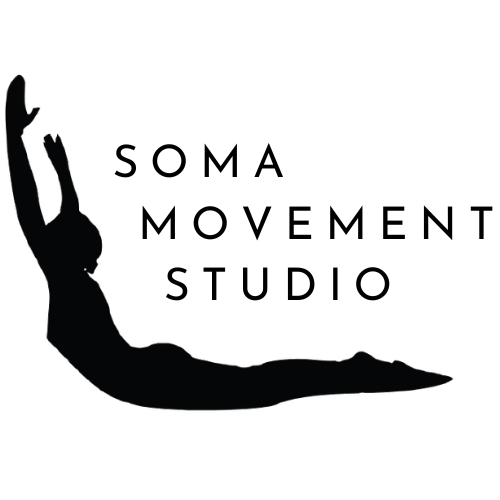Somatic Studies at soma
What is Hanna Somatic Education?
Hanna Somatic Education® is a rapidly effective form of neuromuscular (mind-body training) movement re-education that goes directly to the root cause of most chronic muscular tension: the brain and the way in which it senses and organizes the muscles and movement. It takes full advantage of current neurobiological principles of learning and coordination and forms the foundation of SOMA Movement Studio's approach to teaching movement.
By learning to regain awareness, sensation, and motor control of muscles – an educational process that can only be achieved through movement – the brain can remember how to relax and move the body with correct alignment and form. This process of sensory-motor training creates improved muscle function and enhanced sensory awareness. Hanna Somatic Education, whether done one-on-one with a Hanna Somatic Practitioner or in a group exercise setting, has the potential to transform the way you experience your body and the ease with which you move throughout your life.
What is Somatics like at SOMA Movement Studio?
Hanna Somatic Education is taught in private, group class, and advanced workshop settings. Weekly Hanna Somatic group classes challenge student to reconnect with their body, identify inefficiencies and holding patterns, and melt away tension and are considered Tier One classes. One-on-one Hanna Somatic Sessions with a Hanna Somatic Educator walk the line between body work and exercise to increase the intensity of the method which may be necessary to break particularly stubborn tension patterns to restore fluidity of movement. Advanced workshops (Tier Two classes) are intermittently offered that focus on postural patterns or anatomical regions like neck and shoulder, lower back, or hips.
Hanna Somatic Education vs other Somatic Movement Disciplines
All Somatic-based methods are “good.” Their goal is to create tension-free movement that is efficient and precise. The way these methods differ is in their approach to creating change within the body and the mechanism of learning they utilize to achieve durable results. All paths lead to the same destination, it’s just a question of finding the path that works for that individual’s body at that time.
The key difference between Alexander Technique and Hanna Somatic Movement
Alexander Technique is a form restorative micro-movement which initially focuses on head position and carriage which is thought to have reverberations through the entire musculoskeletal system. Through self observed micro-movement, termed “means-whereby” by Alexander, efficient and neutral posture can be obtained once the head is optimally positioned and the body’s self righting reflexes are reactivated. Both Feldenkrais and Thomas Hanna studied Alexander technique and combined aspects of micro-movement with a broader focus on applying micro-movement to the entire body.
The key difference between Feldenkrais and Hanna Somatic Movement
Feldenkrais is a system of restorative micro-movement which when performed repetitively will re-pattern pathologic movement patterns through learning (“muscle memory” which is cerebellar in origin). A bit like rewiring all the wires in your house. Feldenkrais also developed a hands-on technique termed “kinetic-mirroring” which transiently resets muscle tone mediated by spinal cord reflexes. Thomas Hanna studied Feldenkrais, and took the concepts of micro-movement and combined it with his knowledge of the nervous system to create targeted movement patterns to directly reset muscle tone centrally using the cortical (thinking, conscious) brain. Hanna developed Pandiculation, which is a unique neurologic resetting technique and is akin to resetting the circuit breaker in the brain controlling muscle tone. As a result of this brain-mediated “resetting,” it can produce durable results with more targeted movement and shorter/fewer sessions.



